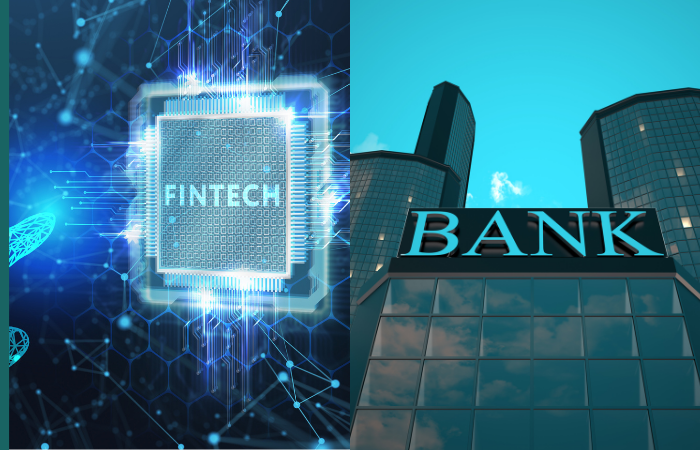Fintech vs Traditional Banking
With customer demands and behaviours evolving quickly in light of Covid-19, Will Hurst, Head of Commercial Development at Monevo, looks at whether traditional banks are failing to keep up with their expectations and what key trends and changes have opened the door to the rise of fintechs.
The financial services competitive landscape has evolved in recent years and it’s clear that fintechs have certainly disrupted traditional banks.
Fintechs include any financial tech company that serves any of the following areas; lending, blockchain, reg-tech, personal finance, payments and billing, insurance, capital markets, wealth management, money transfer and anything to do with the mortgage process.
While digital banks are referred to as fintechs, and have certainly challenged traditional banks in terms of luring away their customers, it would be simplistic and inaccurate to identify that all fintechs are in direct opposition to traditional banks.
In many cases, fintechs are often working in tandem with traditional banks, and allow market incumbents to diversify their suite of products and further monetise their client base.
Consumer-centric approach
As with other sectors over recent years, the financial services sector has experienced rapid digitisation and a shift towards online operating models.
Traditional banks have seemingly struggled to keep pace with the ever-changing tech and resource demands of consumers, while the stellar rise of the challenger bank certainly indicates they've met consumer demand and they're here to stay.
In recent years, it's easy to identify the winners, with the likes of Starling bank voted best British bank for three years in a row, and the losers, as Natwest decides to kill their app-only digital bank Bo after just 5 months.
Not only does this serve as a cautionary tale to other incumbents that harbour aspirations to make in-roads into the digital bank space, it indicates that challenger banks aren't just a pretty fad with cool messaging slogans, but address very real and immediate needs of consumers with innovative product offerings.
Partnerships for the win
In recent years, we've seen big tech partnerships that allow well-known names in consumer finance to partner with and harness the bright sparks of the fintech world. Whether it's Marcus - the online bank from Goldman Sachs - partnering with Saga to offer savings accounts, or in the price comparison world, where CYBG and Go Compare partner for energy switch services, or consumer brands such as the AA partnering with the personal loan marketplace platform Monevo.
These developments come down to two things; driving down the cost of customer acquisition for banks and lenders, but more importantly, meeting the requirements of the consumer with products and solutions to the problems they face. Strategic partnerships allow both parties to achieve greater scale, and improve customer reach.
Open Banking
Further fuelling the drive towards collaboration and partnerships has been spurred by the onset of open banking.
We’re still very much at the start of the open banking revolution, but essentially, open banking means the use of open APIs that enable third-party developers to build applications and services around financial institutions. In layman terms, this means under new open banking rules, your bank must let you share your financial info with third party providers - should you choose to do so.
You may decide to share your spending habits, or details of regular payments, or companies you use. All of this allows consumers to access additional products and services such as personal finance apps that analyse and help manage spending, or offer a centralised overview of all financial accounts in one place.
Yolt, from ING Bank, is one such example of an app that helps centralise all of a consumer's financial accounts in one place, set financial goals, and "spend smart". Open banking has driven competition and innovation within the financial services sector, as it was designed to do so, and the pace of change in all areas of fintech banking will continue to revolutionise both the customer experience and financial products.
As credit providers get their head around the vast volumes of data available on their potential and current customers, intelligent product builds will help lenders and other other financial services companies to filter data into what is useful to them, and optimise revenues accordingly.
OK Boomer
Another factor that helps explain the heating up of the fintech banking sector in recent years is the change in consumer demographics. Since the financial crash in 2008, younger generations have had to struggle with multiple financial challenges including the increase of house prices, the rise of the gig economy and lower comparative wages.
Against this context, it's no surprise that Millennials' demand new and innovative financial products to help them overcome financial hurdles of plunging levels of savings and soaring debt - something incumbent banks have arguably been slow to move on.
Without the cost of physical high street branches, digital-only challenger banks such as Monzo, Revolut, Starling Bank have been able to focus investment on tech and partnerships to provide a range of products marketed specifically to the first wave of cost-sensitive "digital-natives", pitching brightly-coloured bank cards with frank and friendly tones of voice when communicating to their customer.
Above all, Millennials value products and services that deliver convenience and simplify their lives - an element that Monzo, Revolut and Starling have all embedded successfully into their respective brands and product offerings.
Predicted trends indicate disruption to the banking sector via fintech innovation is set to continue, and indeed we see more examples of smaller fintechs springing up to serve the underbanked, or those struggling to manage their cash, or build credit scores - areas historically ignored by the major banks.








